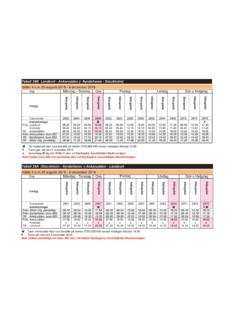Transcription of OFFICIAL RULES FOR THE SPORT OF PÉTANQUE
1 OFFICIAL RULES FOR THE SPORT OF P TANQUE Applicable to all territories of the national federations, members of the FIPJP GENERAL RULES Article 1, Composition of teams P tanque is a SPORT in which: - 3 players play against 3 players (triples). It can also be played by: - 2 players against 2 players (doubles). - 1 player against 1 player (singles). In triples, each player uses 2 boules. In doubles and singles, each player uses 3 boules. No other formula is allowed. Article 2, Characteristics of approved boules P tanque is played with boules approved by the and which conform to the following criteria: 1) To be made of metal. 2) To have a diameter between (minimum) and 8cm (maximum). 3) To have a weight of between 650 grams (minimum) and 800 grams (maximum).
2 The trademark of the manufacturer and the weight must be engraved on the boules and must always be legible. For competitions reserved for players who are 11 years of age or less, they may use boules that weigh 600 grams and are 65mm in diameter provided that they are made under one of the approved labels. 4) They must not be lead or sand filled. As a general rule, the boules must not be tampered with in any way, nor altered or modified after machining by the approved manufacturer. Importantly, re-tempering of the boules in order to modify the hardness applied by the manufacturer is forbidden. However, the player's name and forename (or initials) may be engraved on them, as well as various logos, initials and acronyms, conforming to the manufacturer s specification.
3 Article 2a, Penalties for irregular boules Any player guilty of breaking the above condition 4) is immediately disqualified from the competition together with his or her partners. If a boule not tampered with but worn, or of defective manufacture, does not pass the OFFICIAL examination successfully, or does not comply with the norms set out in paragraphs 1), 2) and 3) above, the player must change it. He or she may also change the set. Complaints relating to these three paragraphs and made by players are admissible only before the start of a game. It is in the interests of the players, therefore, to ensure that their boules and those of their opponents comply with the above RULES . Complaints relating to 4) are admissible at any time during the game, but they must be made between ends.
4 However, from the third end onwards, if a complaint made about the boules of an opponent is proved to be unfounded, 3 points will be added to the score of the opponent. The Umpire or the Jury may, at any time, require examination of the boules of one or several players. Article 3, Approved jacks Jacks are made of wood, or of a synthetic material bearing the manufacturer s mark and having obtained the FIPJP s approval in line with the precise specification relating to the required standards. Their diameter must be 30mm (tolerance: + or 1mm). Their weight must be between 10 and 18 grams. Painted jacks are authorised, but at no time must they, nor the jacks made of wood, be capable of being picked up with a magnet. Article 4, Licences To be registered in a competition each player must present their licence, or, in accordance with the RULES of their federation, a document proving their identity, and that they are a member of that federation.
5 PLAY Article 5, Area of play and terrain RULES P tanque is played on any surface. However, by the decision of the Organising Committee or the Umpire, the teams may be asked to play on a marked and defined terrain. In this case, the terrain for National Championships and International Competitions, must have the following minimum dimensions: 15m long x 4m wide. For other competitions, the Federations may permit variations relative to these minimum dimensions, subject to them not being below 12m x 3m. A playing area comprises of an indeterminate number of lanes defined by strings, the size of which must not interfere with the course of play. These strings marking separate lanes are not dead boule lines except for those marking the end of the lane and the exterior of the terrain.
6 When the lanes are placed end to end, the end lines connecting the lanes are dead ball lines. When the terrains of play are enclosed by barriers, these must be a minimum distance of 1 metre from the exterior line of the playing area. Games are played to 13 points, with the possibility of leagues and qualifying heats being played to 11 points. Some competitions can be organised within time limits. These must always be played within marked lanes and all the lines marking these lanes are dead boules lines. Article 6, Start of play and RULES regarding the circle The players must draw lots (toss a coin) to decide which team will choose the terrain, if it has not been allocated by the organisers, and to be the first to throw the jack.
7 If the lane has been designated by the organisers, the jack must be thrown on this lane. The teams concerned must not go to a different lane without the Umpire s permission. Any member of the team winning the draw chooses the starting point and traces or places a circle on the ground. However, a drawn circle may not measure less than 35cm or more than 50cm in diameter and be of a size that the feet of each player can fit entirely inside it. Where a prefabricated circle is used, it must be rigid and have an internal diameter of 50cms (tolerance: + or 2mm). Folding circles are permitted but on condition they are of a model and the rigidity approved by the FIPJP. The players are required to use the regulation circles provided by the organisers.
8 They must also accept the regulation circles, rigid or folding and approved by the FIPJP, provided by their opponent. If both teams have these circles the choice will be decided by the team that won the draw. In all cases the circles must be marked before the jack is thrown. The circle must be drawn (or placed) more than one metre from any obstacle and at least two metres from another throwing circle in use. The team winning the toss or the previous end will have one attempt to throw a valid jack. If this jack is not valid it is handed to the opponent who may place it at any valid position on the designated terrain. The team that is going to throw the jack must erase all throwing circles near the one it is going to use. The interior of the circle can be completely cleared of grit/pebbles etc.
9 During the end but must be put back in good order when the end is over. The circle is not considered to be an out of bounds area. The players feet must be entirely on the inside of the circle and not encroach on its perimeter and they must not leave it or be lifted completely off the ground until the thrown boule has touched the ground. No part of the body may touch the ground outside the circle. Any player not respecting this rule shall incur the penalties as provided in Article 35. As an exception, those disabled in the lower limbs are permitted to place only one foot inside the circle. For players throwing from a wheelchair, at least one wheel (that on the side of the throwing arm) must rest inside the circle. The throwing of the jack by one member of the team does not imply that he or she is obliged to be the first to play.
10 If a player picks up the circle when there are boules still to be played, the circle is replaced but only the opponents are allowed to play their boules. Article 7, Valid distances for the thrown jack For the thrown jack to be valid, the following conditions apply: 1) That the distance separating it from the internal edge of the circle must be: - 6 metres minimum and 10 metres maximum for Juniors and Seniors. - For competitions intended for younger players, shorter distances may be applied. 2) That the throwing circle must be a minimum of 1 metre from any obstacle and 2 metres from another circle in use. 3) That the jack must be a minimum of 1 metre from any obstacle and from the nearest boundary of an out-of-bounds area. For timed limited games this distance is reduced to 50cm except for the end lines of the lane.





